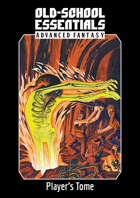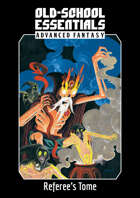A website dedicate to games of all favors and varieties, from video games to good old D&D.
Thursday, October 28, 2021
"New to me" WotC Star Wars RPG Book.
Monday, October 25, 2021
Life is a Test. Testing 1-2-3.
A lot and very little was "up". I had pneumonia and a lot of time on my hands. You see, having pneumonia and no fever indicates COVID. That is basically the kill mechanism for COVID. You have an infection that doesn't trigger a defense which leads to pneumonia, then you die. So, aside from getting tested for COVID weekly, I didn't have anything to do except go online.
Coughing until you have a headache isn't conducive for reading or writing so the blog went on the back burner. I did some digital drawings, download a game to review and wanted to share them on one of my favorite websites: the Cosmoquest Forums. It's all about astronomy, but it's been around for 20 years or more and I have quite a few friends there. Right now they have an issue where you can't post images via an upload but you can via load an image via URL. Hence the images uploaded in that test file.
After a while, I started having 3 or 4-hour stints where I felt fine. I began building models and uploading the images to the blog post I didn't realize was live.
Then more bad news followed by some good news. My house... the one that burned... had asbestos in it. Yes, the irony. Now for the good news. Nothing in the garage was burned or contaminated with asbestos so it all needed to be packed up and moved to allow for cleanup of the interior house. Of course, this happened while I was sick so I had to pay someone do it. If you ever have the chance to not clean your garage and have someone else do it, I cannot recommend this enough. :)Dozens of really cool items were found in the garage. A headset with a microphone, a light ring, a second microphone, some models, dozens of painted... yes PAINTED! figurings, a set of drumsticks, some books, and a few Christmas gifts we had bought for the kids.
Suddenly, I had something to do that didn't require too much energy. Play with toys! But not the ones I bought for the kids. My wife was admendent.
When I started podcasting, I originally envisioned it as a video series, hence the light ring and extra microphone. Unfortunately, my face is not the stuff videos are made of and I stuffed all of it into a box in the garage.But you know what a light ring is great for? Taking pictures of models. And fortunately, all of my Star Wars models survived the fire and found hundreds of painted figures in the garage. So, my next series will be on figurines and models.
| X-Wing | Poe's X-Wing | T.I.E. and T.I.E. Advanced |
|---|---|---|
Review - How to Make War By James F. Dunnigan
Year: 1982, 1993, 2003
Author: James F. Dunnigan
Publisher: Harper Collins
Pages: 257 pages
Rating: 5 of 5 Gold Stars
Despite being both a gamer and historian myself, up until this review I believed that Jim and James Dunnigan were two different people. It explains a lot.
How to Make War is not a gamebook but a guide to war. While the title is focused on current military affairs, each section is applicable to many different eras of warfare. The intent of the book is education, not practical military knowledge. A quick read-through will greatly enhance the reader's background knowledge of what it takes to produce a war, productive or otherwise.
Structurally, the book's 29 chapters are divided into 8 parts. Each part covers one major aspect of warfare. In order, they are:
- Ground Combat,
- Air Operations,
- Naval Operations,
- Human Factors,
- Special Weapons,
- Warfare by the Numbers,
- Moving the Goods,
- and Tools of the Trade.
Wednesday, October 13, 2021
Sunday, October 10, 2021
Review - Necrotic Gnome's Old School Essentials Advanced Fantasy
Allelujah! I found a great title to start with, Necrotic Gnome's Old-School Essentials Advanced Fantasy.
I lost my 1e books and wanted a replacement. I know Necrotic Gnome has been threatening me with a Kickstarter of physical books, but I couldn't wait for a printed copy. I ordered both the Player's Tome and Referee's Tome from DriveThruRPG. Previously, I had been making do with the short free edition which is pretty fine.
| Title: Advanced Fantasy Player's Tome Rule Set: Old-School Essentials Year: 2021 Author: Gavin Norman Publisher: Necrotic Gnome Pages: 257 pages Rating: 5 of 5 Gold Stars |
|
Title: Advanced Fantasy Referee's Tome Rule Set: Old-School Essentials Year: 2021 Author: Gavin Norman Publisher: Necrotic Gnome Pages: 257 pages Rating: 5 of 5 Gold Stars |
|
What I was expecting was an updated rendition of the 1e D&D books. I was wrong.
These books have more in common with the B/X sets or perhaps the Rules Cyclopedia. But wait! That's not all. The author, Gavin Norman set out to refine B/X by remove some warts and flaws. Not only was he successful, but he also went on to fix all of the Unearthed Arcana classes and the accursed Bard class of e1. Somehow, he has three different editions fused in one. Impressive.
What fascinates me the most is how there is a basic and advanced method of character generation. The basic method uses race as a class while the advanced method allows all races to engage in a class. With a tiny modification, this is exactly how I play. The rules do not say is if you can mix basic and advanced methods of characters, but why the hell not. I allow for Basic Elves and AD&D Elven Clerics.
The books are well-paced for teaching new players from a single set of books, which is right in line with what the original B/X books did. Timely information is presented when it's needed and not before. Mr. Norman has also rolled in some welcome updates, such as THAC0 and ascending AC. I hate them both because they are too user-friendly, but this set competently explains all three methods to suit the taste of all three player bases.
Both books are 257 pages long a-piece. The Player's Tome is really the shining star of the set as it contains the most varied information. The Referee's Tome approximates the DMG and Monster Manual of e1 all in one book. B/X didn't have a DMG until the Red Box if I remember correctly and this format avoids getting all murky like the e1 DMG.
So, where are the flaws? Well, there aren't any or many that I could find. More like chatter from the peanut gallery.
The one thing that amused me was the author named a spell "Pass-Wall". Back in the Moldvay version of B/X, it was spelled "Passwall" and was completely omitted from the books except for the Staff of Wizardry description, which doesn't explain the spell. See, real peanut gallery stuff.
I am not a fan of the short monster stat blocks like a module synopsis but have to admit it allows for the presentation of far more critters than a full quarter page stat block of the e1 Monster Manual. I always got warm fuzzies when I found a module that included an appendix with full stat blocks for new monsters. If Necrotic Gnome changed its mind and created a Monster Manual with full stat blocks, I'd totally buy that.
The last item, I don't even know how to quantify. There is too much art. WTF? Did I say that? I love all of the art, but the format is meant for the beautiful full-color, hardback version of the book. I have a printable pdf. If I print this thing, it's going to have qualities similar to a '79 era xerox. That makes me sad and I can't wait to purchase a hard copy.
There you have it, I found three flaws and two of them make me want to purchase a physical copy of something I already have.
So, I guess this is another 5 gold star review. But you don't have to take my word for it, check out what some other reviewers said about this set:
RPG.net Review: "The bullet-point presentation hits the sweet spot when it comes to saving space (and thus cramming more material between the books' pages) as well as creating concise texts with zero ambiguity."
Reviews from R'lyeh: "What is notable with all of these Classes is that the designer has tried to keep them unique, to keep their abilities from encroaching on those of Classes, and to keep them from being too powerful."
Mr. Tim Brannan gives the physical set a glorious, jealously inducing review on The Other Side Blog. I can't wait for these to become available again.
Again, if you haven't followed these bloggers, now is the time. Or you could cut to the chase and follow Campaign Wiki's OSR feed. It is amazing.






























